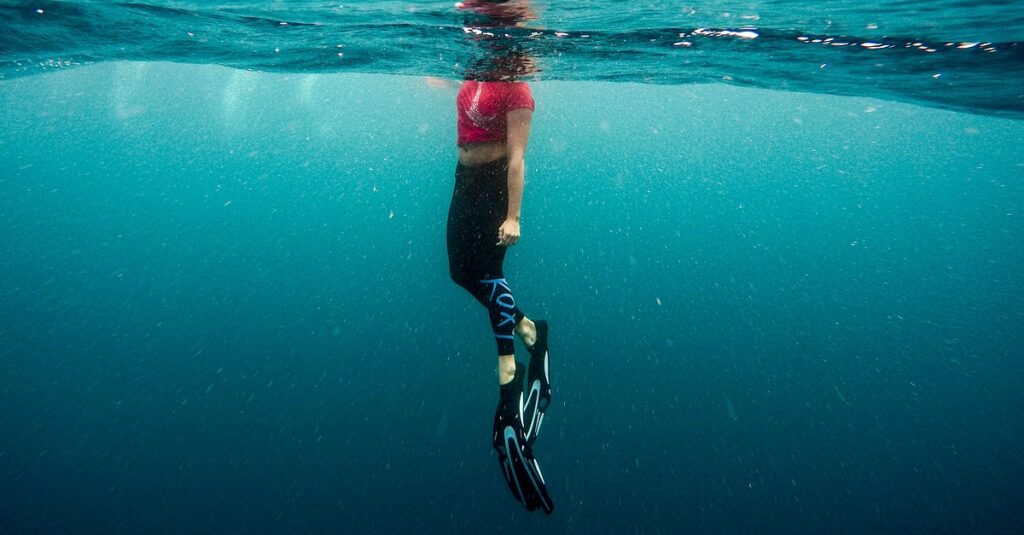

Freediving without weights is possible and may be preferred by some divers who like the freedom of carrying and using as little equipment as possible. Without weights, physical effort is required to sink during the initial descent and this work will use valuable oxygen stores, limiting your dive time and the depths you can safely reach. For longer, deeper dives, freedivers may choose to use weighted belts or sleds.
While weights (e.g. weighted belts, weighted sleds) may be used in some freediving disciplines, freedivers can also descend through self-propulsion until they reach a neutral buoyancy depth. Freediving without weights is harder work which uses more energy and oxygen. Dives without weights are therefore likely to be shorter and shallower.
The True Story Book of Freediving Champion Audrey Mestre and the Story of Her Death
View on Amazon: The Last Attempt (Opens new tab)


Top rated read
Weighting and buoyancy are an important consideration in freediving and can significantly influence performance and enjoyment of the sport. Our article tells you more about freediving without weights.
Can you freedive without weights?
You can freedive with or without using any additional weights. An initial freediving descent requires sufficient force to overcome the natural buoyancy of the human body, with air, fat and thick neoprene wetsuits all adding buoyancy. Every freediver will have a slightly different level of buoyancy depending on their individual lung capacity, body composition and clothing choice.
The force required on the first section of a dive can be supplied either by the physical effort of swimming downwards or by adding additional weight to the diver’s body.
Deeper in the water, pressure on the freediver increases, doubling the amount of pressure normally experienced at sea-level for every 10m of depth. With this rising pressure, the volume of air in a diver’s lungs, sinuses and ears can be compressed to a fraction of normal size.
This air compression eventually reduces buoyancy to a point where after a certain depth divers will achieve neutral buoyancy and freefall down through the water without any need for added weight or muscular effort.
When using your own muscles to reach the point of freefall, this uses up valuable oxygen stores in your body, shortening dive time and limiting depth. Training with dynamic apnea and strength exercises or using fins in the water can both help freedivers to swim more efficiently under these conditions and minimize this oxygen use.
Weights can be useful if you want to undertake longer, deeper dives, but are not essential for freediving.
Do I need a weight belt to freedive?
You do not need a weight belt to freedive but wearing one could enable you to undertake longer, deeper dives than you would accomplish without.
To learn more about how freedivers sink, you should check out our full article on how freedivers sink here (opens new tab).
Can I freedive without a wetsuit?
You can freedive without a wetsuit and there may be both advantages and disadvantages to this choice.
A wetsuit can keep you warm and comfortable for longer periods in cooler waters, which could be important if you plan to spend several hours freediving, or to dive to depths where the water is very cold.
Wetsuits add buoyancy to your body, meaning that you will either need to add weights to offset your wetsuit buoyancy or make more physical effort in order to reach the point of neutral buoyancy and freefall during your dive. Without a wetsuit, you should need less weight and less effort to reach the same depth.
When deciding whether or not to wear a wetsuit, consider weather, water conditions and dive plans, as well as your own personal preferences and diving capabilities.
References
https://www.deeperblue.com/weighting-yourself-for-freediving/
https://www.deeperblue.com/guide-to-freefalling-in-freediving/
